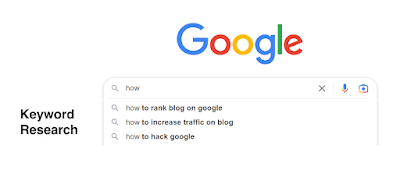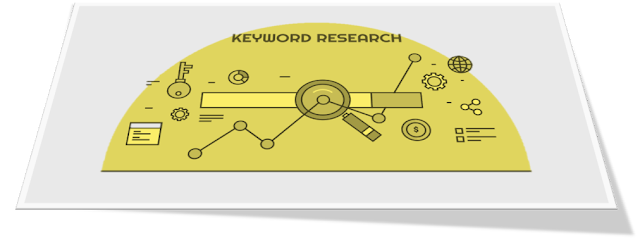The Power of Keyword Research in Digital Marketing: A Comprehensive Guide
Keyword research is the foundation of every successful digital marketing campaign and an essential component of digital marketing. It involves identifying and analyzing the keywords and phrases that people use when searching for products or services on search engines. The process of keyword research involves analyzing search volumes, competition levels, and user intent to identify the most relevant and valuable keywords for a particular website or business.
Keyword research provides valuable insights into consumer behavior, allowing businesses to optimize their online presence to better meet the needs of their target audience. By conducting thorough keyword research, digital marketers can optimize their website content and online advertising campaigns to target the right audience with the right messaging, improving their chances of attracting high-quality leads and generating revenue. Therefore, keyword research is a critical aspect of any effective digital marketing strategy. In this blog, we will discuss the importance of keyword research in digital marketing and provide tips for conducting effective keyword research for your successful career in Digital Marketing.
Why is Keyword Research Important?
Tips for Conducting Effective Keyword Research:
- Find new keyword ideas: Keyword research tools can help you discover new keyword ideas that you may not have thought of before. These tools can suggest related keywords, long-tail keywords, and other variations that you may not have considered.
- Analyze search volume: Keyword research tools can provide data on search volume, which can help you understand how popular specific keywords are and how many people are searching for them each month.
- Assess competition: Keyword research tools can also help you assess the level of competition for specific keywords. This can help you understand how difficult it may be to rank for certain keywords and whether or not it's worth investing time and resources into optimizing for those keywords.
- Evaluate performance: Once you've identified your target keywords, keyword research tools can help you evaluate the performance of your content and track your progress over time. This can help you make data-driven decisions and adjust your strategy as needed to achieve better results.
- Lower competition: Long-tail keywords are less competitive than shorter keywords, as they are highly specific to a particular niche or topic. This means that it can be easier to rank for long-tail keywords and get your content in front of the right audience.
- Higher conversion rates: Because long-tail keywords are highly specific, they tend to attract users who are further along in the buying process and have a clearer idea of what they are looking for. This can lead to higher conversion rates and a better return on investment for your digital marketing efforts.
- Better targeting: By focusing on long-tail keywords, you can better target specific segments of your audience and create content that meets their specific needs and interests. This can help you build a stronger connection with your audience and drive more engagement and loyalty.
- More natural language: Long-tail keywords tend to be more conversational and natural-sounding than shorter keywords. This can make it easier to create content that feels authentic and engaging to your target audience.
- Identify the different types of user intent: There are several different types of user intent, including informational intent, navigational intent, transactional intent, and commercial intent. Informational intent is when a user is looking for information on a particular topic. Navigational intent is when a user is looking for a specific website. Transactional intent is when a user is looking to make a purchase or perform an action. Commercial intent is when a user is researching products or services but hasn't yet made a decision.
- Identify keywords that match user intent: Look for keywords that match the different types of user intent. For example, for informational intent, you might look for keywords that include "how to," "what is," or "tips for." For navigational intent, you might look for branded keywords or keywords that include specific website names. For transactional intent, you might look for keywords that include phrases like "buy," "order," or "purchase."
- Evaluate search results: Evaluate the search results for your targeted keywords and analyze the content of the top-ranking pages. This will give you an idea of the type of content that Google sees as relevant for that particular keyword.
- Create content that meets user intent: Based on your research, create content that meets the user intent behind the targeted keywords. Make sure your content provides the information or value that users are looking for when they search for those keywords.
- Identify your top competitors: Start by identifying your main competitors in your industry or niche. These are the businesses that are targeting the same audience and offering similar products or services.
- Analyze their website content: Look at the website content of your competitors, including their landing pages, blog posts, and product pages. Identify the keywords and search terms that they are targeting in their content, and note any trends or patterns you observe.
- Examine their meta tags: Check out the meta tags used by your competitors on their website. These include the title tags and meta descriptions, which are important for on-page SEO optimization. Look for the keywords and phrases they are using in these tags.
- Evaluate their backlinks: Analyze the backlinks of your competitors, which are the links from other websites that are pointing to their site. Determine which websites are linking to their site and the keywords they are using in their anchor text.
- Use keyword research tools: Utilize keyword research tools like Google Keyword Planner, Ahrefs, SEMrush, or Moz to see the keywords that your competitors are ranking for and driving traffic to their website.













No comments: